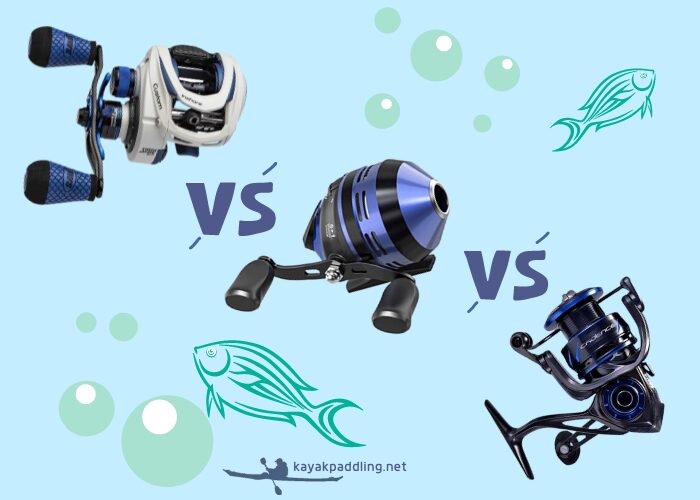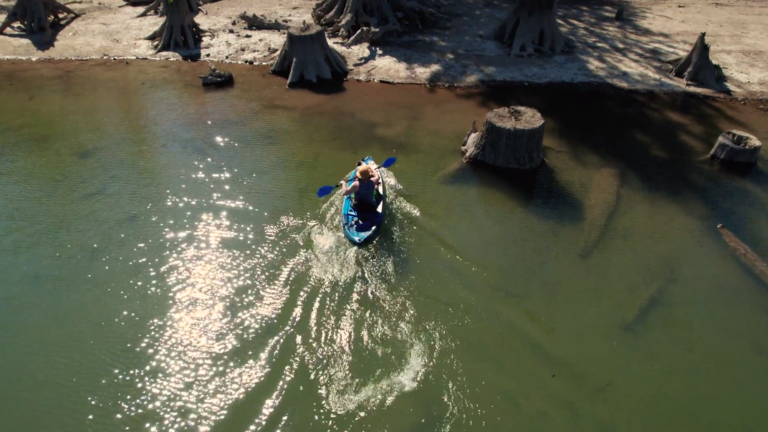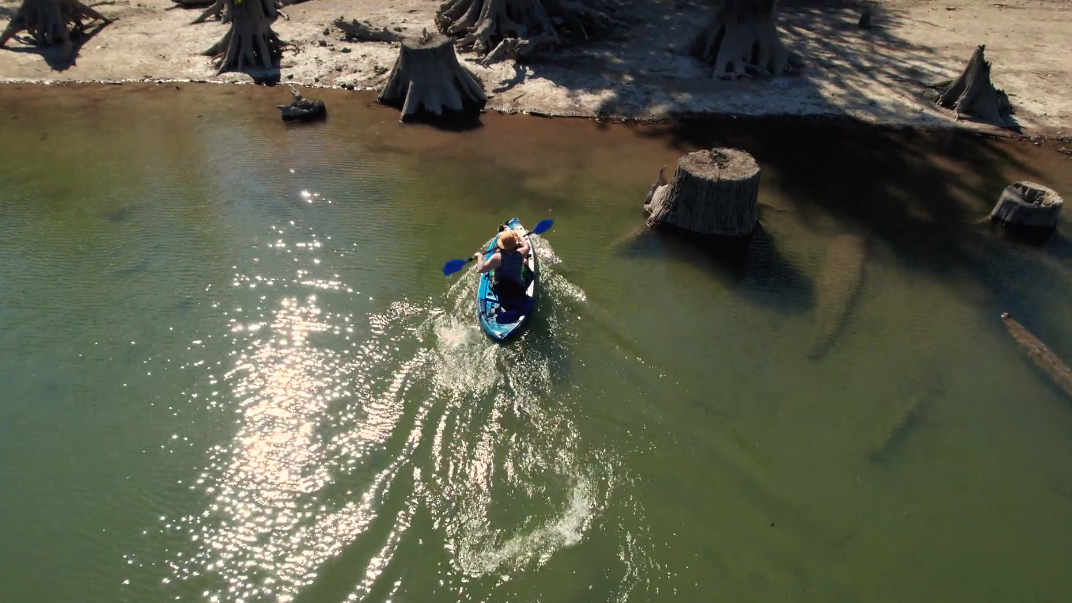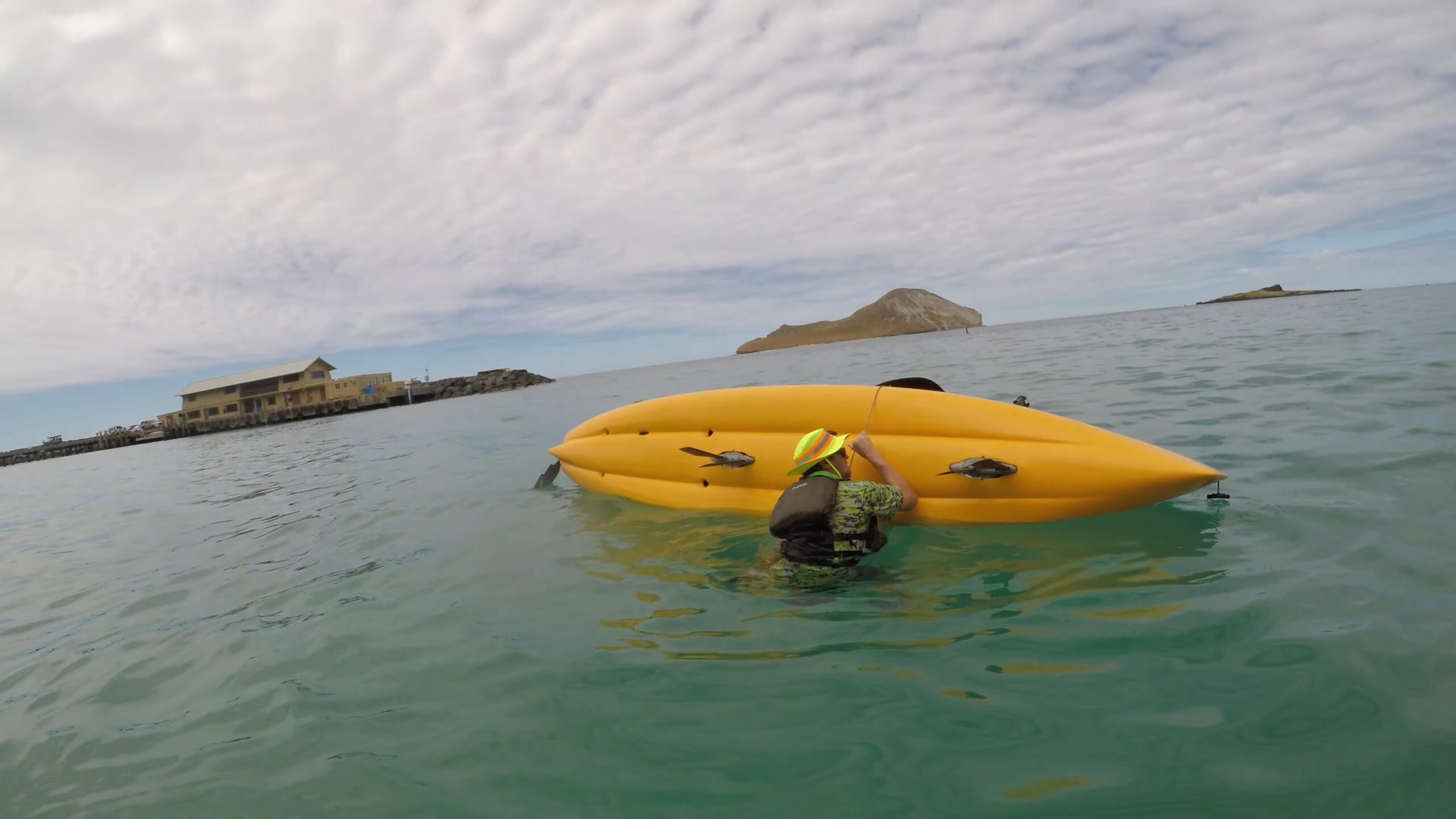Back in the day, before the era of fishing reels, we’d rely on the age-old methods of nets and poles. Now, don’t get me wrong, these methods had their charm, but they were often less precise and came with their own set of challenges, such as snapped lines from an energetic catch.
I’m eternally grateful for the introduction of spinning reels into our angling world. The ease of casting, better control over a spirited fish, and smooth line retrieval changed the game for many of us.
Spinning reels have maintained their reputation over the years, but I’ve noticed the younger generation of anglers getting cozy with baitcasters. In the reel world, the big three are spinning, baitcasting, and spin-casting.
Now, speaking from experience, baitcasting reels have their unique merits. Say goodbye to worries of the line slipping out unexpectedly when retrieving. And for those moments spent casting from a boat or a pier, these reels ensure your line stays clear of any potential snags, thanks to the ingenious automatic braking systems.
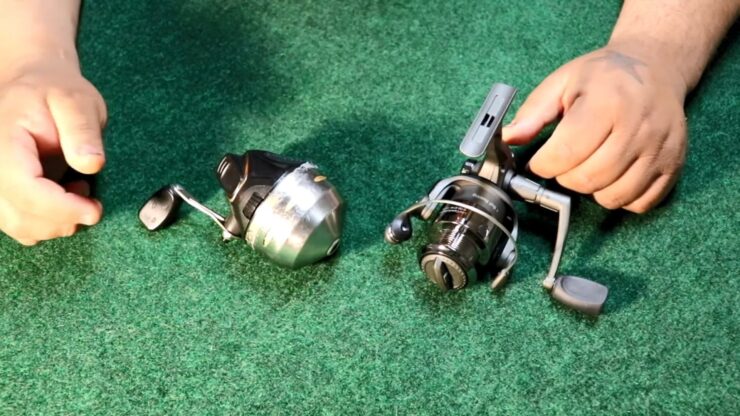
One of the tricks with baitcasters is the ability to cast a mile by just tweaking the gear ratio. But there’s a bit of finesse involved; you’ve got to keep a steady thumb on the line release button, else you might get a surprise! That said, the anti-reverse lever right above the button’s got you covered.
For those on the move or just starting their fishing journey, spinning or spincasting reels can be your loyal companions. Spinning reels have a minimalist charm to them – less intricate, light, and travel-friendly.
On the flip side, spincasting reels are the real MVPs for newcomers; their design practically eliminates line tangles, whether you’re casting or battling it out with a feisty one.
Baitcasters, with their extended cast and swift retrieval, are an angler’s dream. But mastering them? That’s an art in itself. If you’re keen on diving into the world of spincast reels, I’ve put together a guide to set you on the right path.
The Basics of Reeling
Reeling in a fish may seem simple, but there are many types of fishing reels, each with its own characteristics and best applications. Most anglers will agree that you can’t go wrong with any fishing reel in particular, since they all do the same thing – reposition line on the spool for easy retrieval.
However, deciding which one is right for your type of fishing will help you get more fish in less time. Different kinds of reels include spincast, spinning, and baitcasting reels.
Spincasting
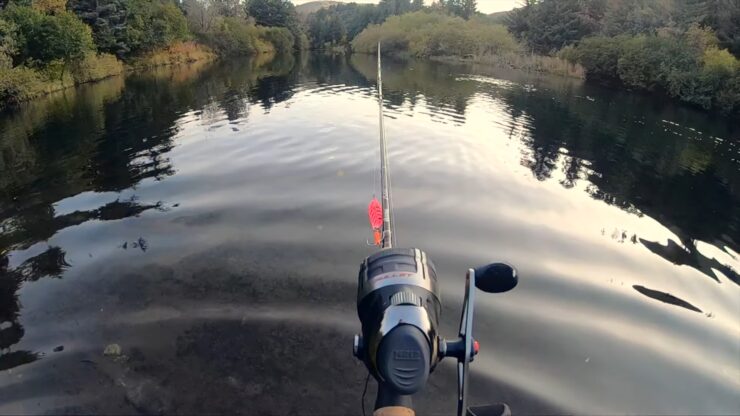
A spincasting reel is a fishing reel that uses centrifugal force and tension from the line to spin the handle as well as an attached spool. The term “spincast” refers to how this type of fishing pole is used, instead of the mechanism itself.
Spincasters typically use lines ranging from 1-10 pounds, with some able to cast a line up to 20 pounds. While some regard spincasting rods as beginner gear because they are easy to use and require little practice, these reels have fewer parts than other kinds of spinning reels.
They also have no bail arm or level wind, so they cannot control line or tension during retrieval. Because of this, spincasting reels are ideal for novice anglers who want to get started bass fishing without spending too much money on equipment.
However, this kind of reel is not recommended for fishing in higher-level competitions because it can hamper performance when targeting bigger or more aggressive fish. It is also not the best choice if you plan to use live bait.
Spinning
A spinning reel is a type of fishing reel mounted on the side of the rod rather than above. A spinning reel consists of a spool, frame and handles attached by rivets or screws. The spool rotates freely on a pin between two stationary plates.
Its design allows for relatively long, thin rods and it can cast light weights very efficiently. Spinning reels are typically able to hold from 200-500 yards of 12-30 pound test monofilament lines but have been built that could handle up to 975 yards of 30-pound gel spun backing with 60-pound test monofilaments for ultra-long range.
Baitcasting
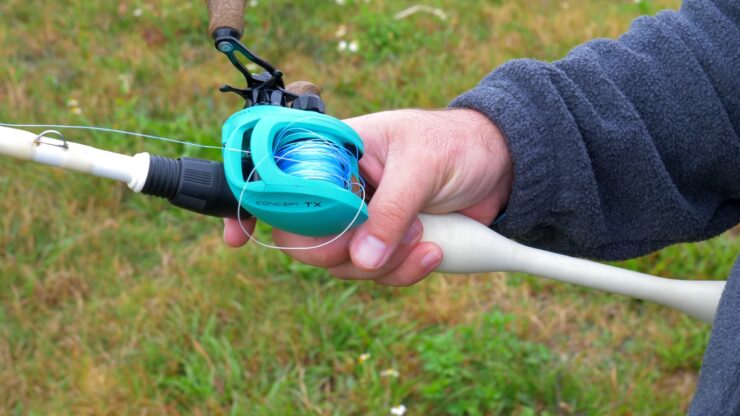
A bait-casting reel is a type of fishing reel that uses centrifugal force and a bent rod to cast artificial baits. It is very similar in design to the spinning reel except it has a much smaller spool diameter.
They are typically used for bass fishing but have been adapted for use by surf casters, saltwater flats fishermen, and others. This type of reel uses up rods from about 6’4 to 9 feet long, with shorter lighter rods being more popular for this style of fishing due to their ease of casting precision and their ability to make fine casts at high speeds.
Rods used in bait-casting reels are typically made from graphite or fiberglass composites, which have increased strength while remaining relatively light. Baitcasting reels typically have a gear ratio between 5:1 and 8:1, have the ability to handle from 10-20 pound lines, and can hold up to 200 yards of 20-50 pound test monofilament line. The low gearing reduces backlash but makes it harder to crank in a struggling fish at high speed.
Which Reel is Best Suited for My Fishing Needs?
The choice of reel often aligns with the angler’s experience and the specific fishing scenario. Here’s a closer look.
When Should I Opt for a Baitcast Reel?
Choose baitcast reels if you’re an advanced angler aiming for precision. Whether you’re targeting a specific spot behind a submerged log or trying to get your lure into a small pocket of clear water, baitcasting reels are your best bet.
They’re also the reel of choice when using heavier lures and lines, as they handle these better than other reels. If you’re fishing for larger species, especially in situations where you need to make long, accurate casts, or retrieve lures at a faster pace, baitcasting reels come into their own.
Why Should I Choose a Spincast Reel?
If you’re just starting out, or if you’re introducing a young one to the joys of fishing, spincast reels are a perfect choice. They are the most user-friendly of the three, offering a straightforward casting and retrieving experience.
Also, if you’re an occasional angler looking for a relaxed fishing day without the intricacies of advanced reels, spincast is the way to go. Their push-button ease makes them less intimidating and more accessible.
When is a Spinning Reel the Right Choice?
Spinning reels shine in versatility. If you’re an intermediate angler or if you enjoy using a variety of lures and techniques, this reel is for you. They’re great for light lures – think small jigs, live baits, or soft plastics.
If you’re fishing in freshwater, especially for species like trout, bass, or panfish, spinning reels offer the flexibility you need. They’re also excellent for long casts, especially when using lighter lines and baits.
Buying Guide
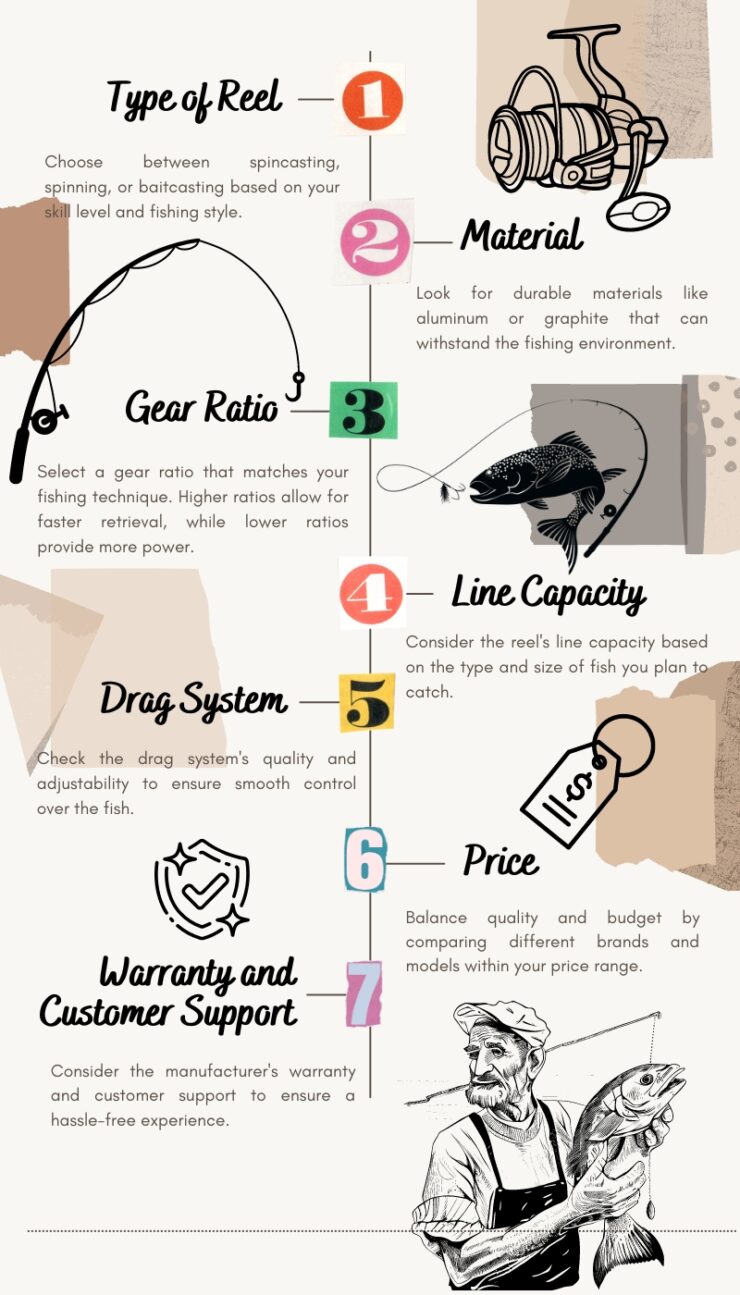
When purchasing a fishing reel, consider the following features to find the one that best suits your needs:
- Type of Reel: Choose between spincasting, spinning, or baitcasting based on your skill level and fishing style.
- Material: Look for durable materials like aluminum or graphite that can withstand the fishing environment.
- Gear Ratio: Select a gear ratio that matches your fishing technique. Higher ratios allow for faster retrieval, while lower ratios provide more power.
- Line Capacity: Consider the reel’s line capacity based on the type and size of fish you plan to catch.
- Drag System: Check the drag system’s quality and adjustability to ensure smooth control over the fish.
- Price: Balance quality and budget by comparing different brands and models within your price range.
- Warranty and Customer Support: Consider the manufacturer’s warranty and customer support to ensure a hassle-free experience.
Maintenance and Care
Proper maintenance and care of your fishing reel can significantly extend its lifespan and ensure optimal performance. Here’s a guide to maintaining the three main types of fishing reels:
General Tips:
- Clean Regularly: After each use, especially in saltwater, rinse the reel with fresh water to remove dirt and grime.
- Dry Properly: Allow the reel to air dry completely before storing it to prevent rust and corrosion.
- Lubricate: Apply reel oil or grease to the moving parts as per the manufacturer’s instructions. This helps in smooth operation and prevents wear and tear.
- Inspect: Regularly check for any signs of damage or wear, such as bent parts or frayed lines, and replace them as needed.
Spincasting Reels:
- Avoid Overfilling: Overfilling the spool with line can cause tangling and reduce casting efficiency.
- Handle with Care: Since spincasting reels are often considered beginner gear, they may not be as robust as other types. Handle them with care to avoid damage.
Spinning Reels:
- Adjust Drag Properly: Ensure that the drag is set correctly for the line’s strength to prevent breakage.
- Clean the Bail: The bail arm should be cleaned and lubricated regularly to ensure smooth operation.
Baitcasting Reels:
- Tune the Brake and Tension: Regularly check and adjust the brake and tension settings to match the lure weight and line type.
- Protect from Sand and Dirt: Baitcasting reels are more susceptible to damage from sand and dirt, so extra care should be taken to keep them clean.
How Do These Reels Affect Casting Distances and Techniques?
Just as a world-class chef must know which tool to use for each dish, an angler must understand how each reel type impacts their casting. Let’s explore further.
Baitcast Reel
Baitcast reels offer unmatched accuracy. With practice, you can achieve remarkable casting distances, but their true strength lies in precision. The thumb control allows an angler to slow down or halt the line’s flow, making it possible to land lures in tight spots.
However, mastering a baitcast reel requires practice. Overcasting can lead to backlashes, which are tangles of the line on the spool. To avoid this, one must train their thumb to apply just the right amount of pressure.
Spincast Reel
Spincast reels offer simplicity in casting, which is why they’re a favorite among beginners. The line flows out freely once the button is pressed, providing a tangle-free experience. However, this ease comes with a trade-off in accuracy and distance.
While you can achieve moderate casting lengths, the precision of a baitcast or spinning reel isn’t there. For general fishing where pinpoint accuracy isn’t paramount, a spincast reel will serve well. It’s also great for situations where tangles can be especially frustrating, like teaching young children to fish.
Spinning Reels
Spinning reels offer a balanced casting experience. With them, you can achieve longer casting distances, especially with lighter lures. The design allows the line to flow off the spool in coils, reducing friction and enabling the lure to travel farther.
Moreover, with a spinning reel, an angler can employ a range of casting techniques, from overhead casts to side-arm casts and even underhand tosses. This versatility allows you to adapt to various environments and situations, from casting under low-hanging trees to launching baits far into the surf.
FAQ
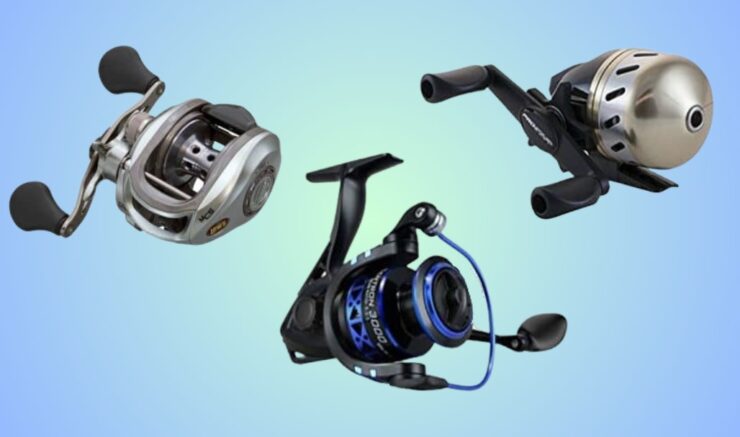
What is a backlash in baitcasting and how can it be prevented?
A backlash, often referred to as a “bird’s nest,” occurs when the spool on a baitcasting reel spins faster than the line is coming off, leading to a tangled mess of line. Preventing backlash requires practice and finesse.
It’s important to adjust the reel’s brake and tension settings according to the weight of the lure and to train your thumb to apply the right amount of pressure to the spool during the cast. Starting with a slower spool speed and gradually increasing as you get more comfortable can also help.
Are there any advantages of using braided lines with spinning reels?
Yes, braided lines offer several advantages with spinning reels. They have a smaller diameter than monofilament lines of the same strength, which means you can spool more braided line onto your reel.
Additionally, braided lines have no memory, reducing the chances of line twists and coils. They also provide excellent sensitivity, allowing you to feel even the slightest bite.
How often should I replace the line on my fishing reel?
The frequency of line replacement depends on usage and line type. If you fish regularly, it’s advisable to replace monofilament lines once a year or even sooner if you notice it becoming brittle, discolored, or coiled. Braided lines last longer but should be inspected regularly for wear and tear.
Can I use a baitcasting reel for surf fishing?
While baitcasting reels are primarily associated with freshwater fishing, there are baitcasting reels designed specifically for saltwater and surf fishing. When choosing a baitcasting reel for surf fishing, ensure it’s built to withstand the corrosive nature of saltwater and can handle heavier lines and lures commonly used in surfcasting.
How do I determine the right gear ratio for my fishing needs?
The gear ratio indicates how many times the spool rotates with a single turn of the reel handle. A higher gear ratio retrieves the line faster. If you’re looking to retrieve lures quickly, such as when working a spinnerbait or buzzbait, opt for a higher gear ratio (e.g., 7:1).
For slower presentations or when you need more power, like cranking deep-diving crankbaits, a lower gear ratio (e.g., 5:1) is appropriate.
Why do some anglers have multiple fishing reels?
Different fishing scenarios often require specific reel features for optimal results. An angler might use a baitcasting reel for precision casting in freshwater, a spinning reel for its versatility in various conditions, and a heavy-duty reel for big game saltwater fishing.
Having multiple reels allows an angler to be prepared for a wide range of fishing environments and targets.
Conclusion
All three fishing reel types serve the same function, but their differences in design and capability make them suited for different kinds of fishing. Beginners might find spinning reels easy to use, since they aren’t complicated by a bait-casting reel’s level wind, or spincasting reel’s lack thereof. However, there are some benefits to having these features depending on your skill and preference.
Spinning and baitcasting reels offer more control over line tension when fighting big fish. Baitcasting reels also give anglers better leverage when reeling in high-speed to avoid backlash from the narrow spool diameter. Regardless of which kind you choose to use, always remember that practice makes perfect!
Adelaide Gentry, a seasoned kayaking enthusiast and expert, is the driving force behind KayakPaddling.net. With over a decade of experience navigating the world’s most challenging waterways, Adelaide combines her passion for adventure with a deep knowledge of kayaking to provide insightful and practical guidance for paddlers of all levels.
Related Posts:
- 10 Best Closed Face Reels 2024 - Game-Changers…
- Heavy Duty Fishing: 11 Best Rods And Reels For Big Fish 2024
- 10 Best Saltwater Fishing Boats - Ultimate Angling Adventure
- 14 Best Salmon Landing Net 2024 - Strong Nets for…
- 12 Best Fishing Lures Ever 2024 - Baits That…
- 9 Best Backpacking Fishing Rods 2024 - Lightweight…

